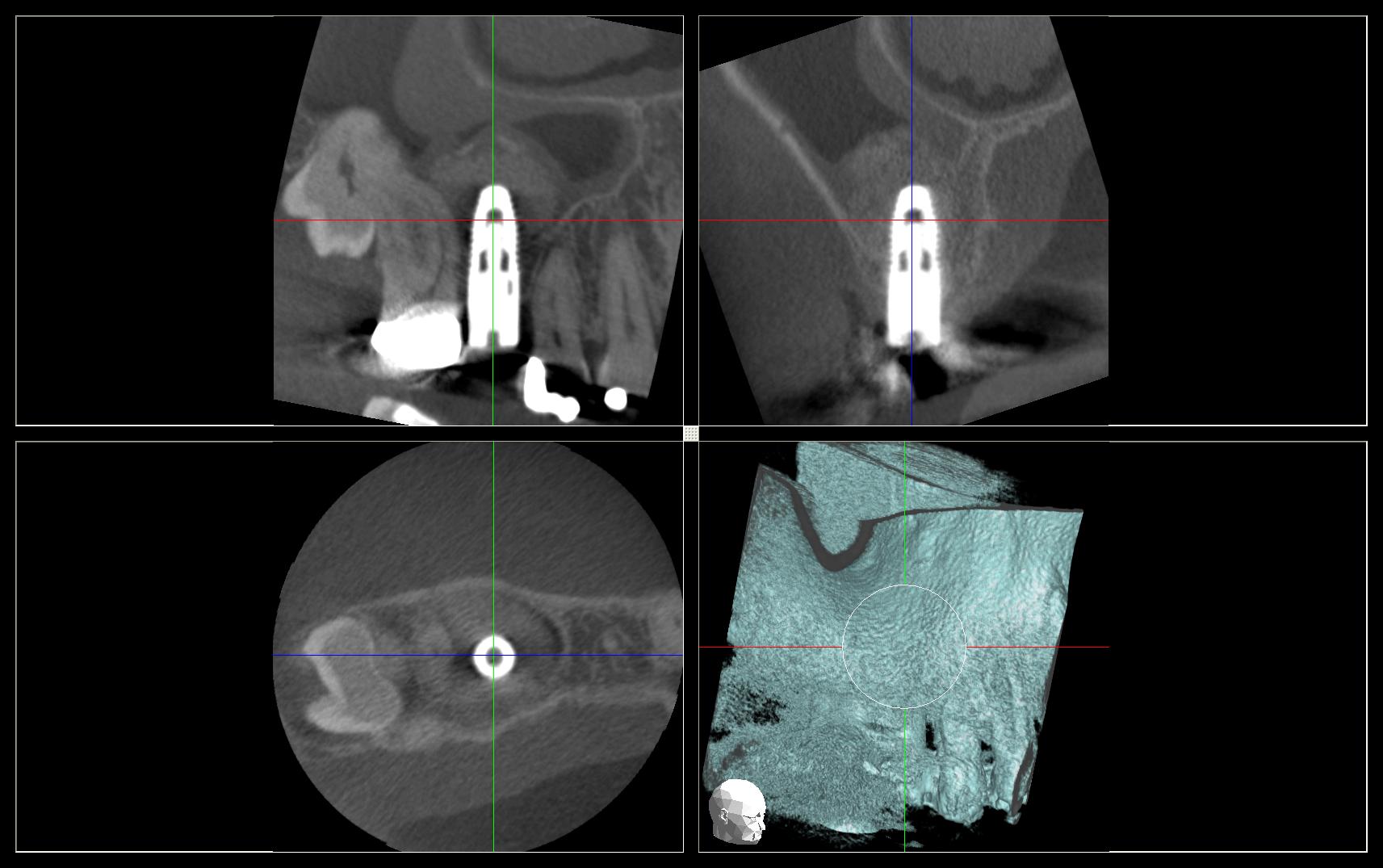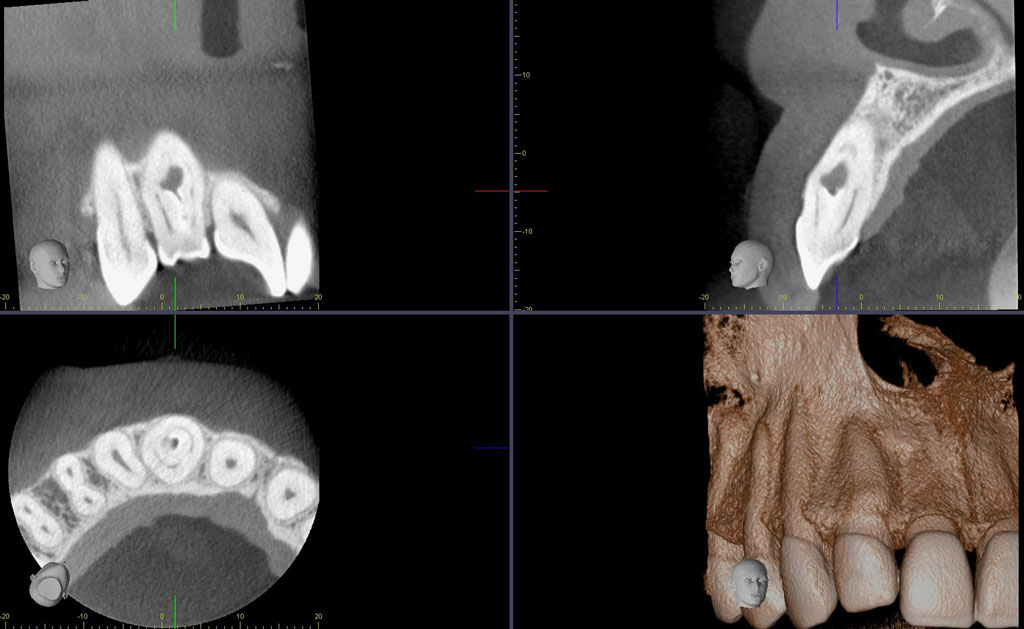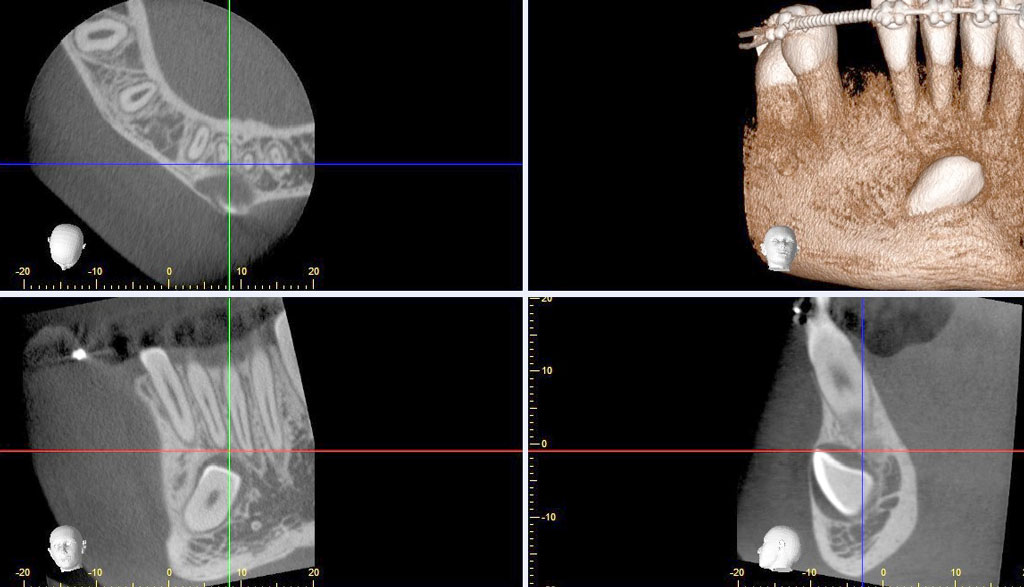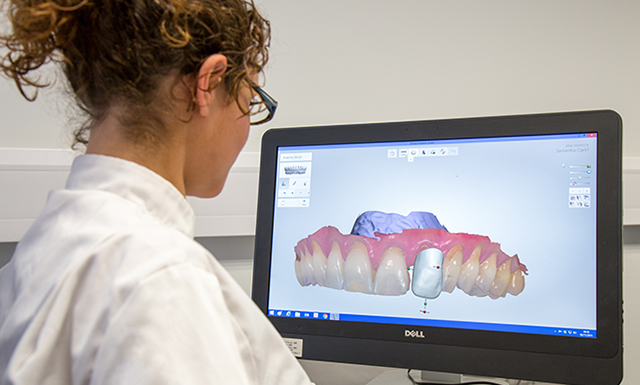Our unique range of scanners and scan protocols means that we can optimise exposures for every eventuality for simple site evaluation or complex guided procedures.
Dental Implant Surgeons can place implants with the optimum accuracy using the 3D images produced by the CBCT scanner and measure bone depth and width; as well as accurately define the location of anatomical structures.
Our CBCT images will also be the starting point of any guided surgery approach, from a simple lab-made stent to digital guided surgery. We also support our referrers with embracing the digital flow whereby dental restoration is prosthetic-led.










